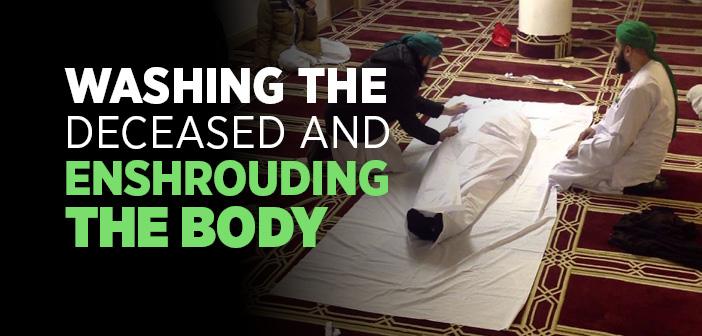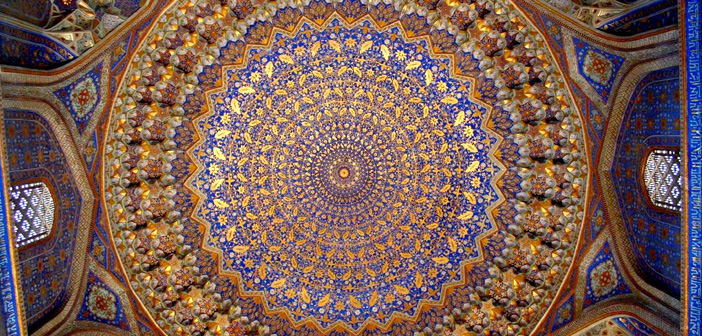What is washing the body? What is enshrouding the body?
When the deceased (janazah) is about to be washed, the body should be in a secluded and a private room and placed on an elevated point. Then the body is clothed in a light lengthy shirt and washed with cold or warm water depending on the season. First, the body is placed on a bed in a sitting position with its back reclined. Afterwards, the body of the deceased is laid down on its back. The person washing the body wraps a piece of cloth around the left hand and uses it to clean the private parts of the body. Then, the dirty cloth is unwrapped from the hand and a new clean cloth is wrapped around the hand in order to clean the whole body. Then a minor ablution is performed on the body just as is common for Muslims. The hair and beard is washed and combed. The falling hair is collected and placed in the shroud. First, the right side and then the left side of the body lying on its back is washed. It is a Sunnah to use things like soap, lote tree, and epicalyces when washing the body, then to pour water from head to feet, and to mix some camphor to the water.
If something impure comes out of the body after washing it, it is enough to wash out the impure material. However, it is better to wash the entire body and repeat the ablution.
Men should be washed by men, and women should be washed by women. It is permissible for the spouses to wash each other’s body. The woman’s female relatives are preferred to her husband in washing her body because relatives of the same gender have priority in the task of washing the body. When a man washes his wife’s body or when a woman washes her husband’s body, he/she should keep his/her hand wrapped with a piece of cloth in order to prevent his/her state of ablution nullified. It is not reprehensible for ritually impure (janaba) person or a woman in menses to wash a body. If there is no woman or close relative to wash a female body, dry ablution should be performed. If a pilgrim passes away in the state of ihram, no fragrance is applied to the body, and the nails and hair are not clipped.
The deceased is enshrouded with a cloth that was permissible for him/her to wear when he/she was alive. It is Sunnah for the shroud to be white. The cost of the shroud is paid out of the deceased’s inheritance. The minimum amount of a shroud is that it is consists of one piece of cloth big enough to cover the entire body.
It is more virtuous to have three pieces of shrouds. It is also permissible to use four or five pieces of shrouding. It is more virtuous to shroud a woman with five pieces. If the deceased is enshrouded with three pieces, this is called lifafa. If a man is enshrouded with five pieces, a shirt and a turban are added beneath the lifafa. The five pieces of woman’s shroud includes the izar (skirt), the qamis (shirt), the khimar (headcover) and the two lifafas.
The deceased is enshrouded in the following way: The widest and best piece of lifafa is laid down to the ground and the second lifafa is laid down on it. Similarly, the third lifafa is laid down on top of the second one. On each layer of lifafa, hanut (an aromatic compound of camphor, rejd perfume and red and white sandalwood) is sprinkled. Then, the deceased is laid down on his/her back on them. Again, some fragrant materials like camphor and hanut are sprinkled on the body. Then, the body is tied with pieces of clothes from the level of its belly. This is followed by pieces of cotton being put into the openings of the body. After that, the lifafas are wrapped one by one on the body and tied from its thighs. When the deceased is placed into the grave, these ties are undone. If a man dies when he is in the state of ihram, he is not to be dressed in any seamy shrouds and his head is not to be covered.
Source: Fiqh1 (According To The Shafi’i School Of Islamic Law), Erkam Publications





